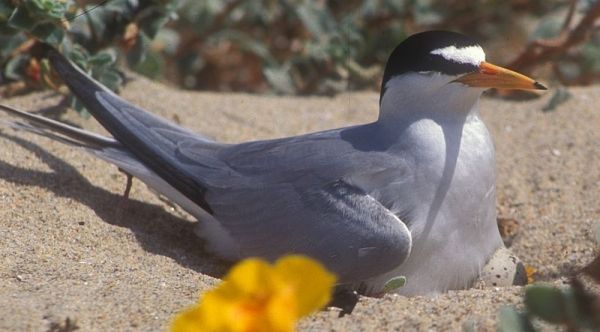In San Diego’s Mission Bay, just a short drive from SeaWorld, endangered birds have a protected place to thrive, unperturbed by tourists. North Fiesta Island is home to a dog park, youth aquatic center—and a fenced-off sand dune where California least terns are building nests and raising their young.
Among the threats to these birds’ survival, however, is this habitat itself. Weeds and vegetation can easily take over the dune. This makes the least tern chicks more vulnerable to predators, like crows and ravens, because their light-brown feathers stand out among the greenery. The vegetation makes it easier for the predators to eat the chicks and more difficult for their parents to defend them, Megan Flaherty, restoration program manager for the San Diego Audubon Society (SDAS), told the San Diego Union-Tribune. And the small area of Fiesta Island that the birds are confined to makes them easier for predators to spot.
Fortunately, volunteers with the SDAS’s habitat restoration project help keep the birds safe by clearing the area of weeds and other plants. “They need open expanses because their eggs and their chicks are both perfectly camouflaged—they blend into the sand,” Flaherty told NEWS 8 last year.
Read more at Care2
Photo credit: Mark Pavelka/USFWS via Wikimedia Commons


